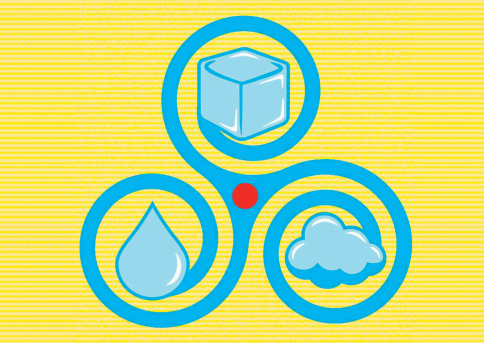
New research sheds light on the behavior of liquids and gases under extreme conditions.
What do superhot fireballs produced at big particle accelerators have in common with the steam in your pressure cooker and the ice in your refrigerator? The answer is quite a lot, according to scientists trying to understand the nature of matter in neutron stars, the early universe and other extreme conditions.
Everyday experience with water in our kitchens exposes us to how the same material has different phases-liquid water, gaseous steam and solid ice. Similarly, we breathe in gaseous oxygen to power our metabolism, while we use liquid and solid oxygen as rocket fuel.
Yet the fact that matter has different phases is profoundly strange. Science has studied it deeply since the 19th century, but it wasn't until the late 20th century that theory caught up to reality fully. In 1982, physicist Kenneth Wilson won the Nobel Prize for his theoretical work on phases of matter.
By subjecting water to varying temperature and pressure, we can map out a "phase diagram" that depicts the form it takes under different conditions. When you bring water to a boil on the stove by applying heat, the temperature pauses in its rise at the boiling
point, and the heat instead goes into changing liquid into gas; this is called latent heat.
The stable boiling temperature of water is quite useful in cooking, as it helps us to get predictable results. We can also tweak the boiling point using a pressure cooker. At higher pressures, the boiling temperature increases while the latent heat shrinks.
Eventually, at exactly 217.25 times atmospheric pressure, the latent heat vanishes altogether. At that point the water passes from liquid to gas continuously; those phases are no longer distinct. Just below the critical pressure, the water boils at a limiting temperature of 373.946 degrees Celsius, or about 705 degrees Fahrenheit.
Very interesting behavior occurs near the critical juxtaposition of pressure and temperature, where liquid and gas become indistinguishable. The density of water fluctuates wildly, as if it isn't quite sure how it should organize itself. Carbon dioxide and many other substances behave similarly. Explaining the reasons for that universality in the behavior of many different substances was Kenneth Wilson's big achievement. According to his general theory, the fluctuations have a life of their own, almost independent of the details of the underlying matter.
Now, at the Large Hadron Collider near Geneva and the Relativistic Heavy Ion Collider in Brookhaven, N.Y., scientists are pushing universality harder than it's ever been pushed before. In the colliders, nuclear matter is the liquid-like phase, while the gas-like phase is quark-gluon plasma. Researchers collide nuclei of gold atoms at different energies and produce fireballs with a range of temperatures and densities, then map out the phase diagram.
In the early 1990s, Krishna Rajagopal and I predicted that there would be a critical point-around 10 trillion degrees-where the distinction between nuclear and quark matter fades away. That point's existence could be confirmed, we proposed, by observing fluctuations in the fireballs that have nearly the critical temperature and pressure.
Experimenters at Brookhaven have reported hints of just such behavior. They are now analyzing a much bigger data set to nail it down (or not). If all goes well, they'll have demonstrated that deep ideas invented to understand problems in physical chemistry and thermal engineering continue to be useful far beyond their down-to-earth origins.

